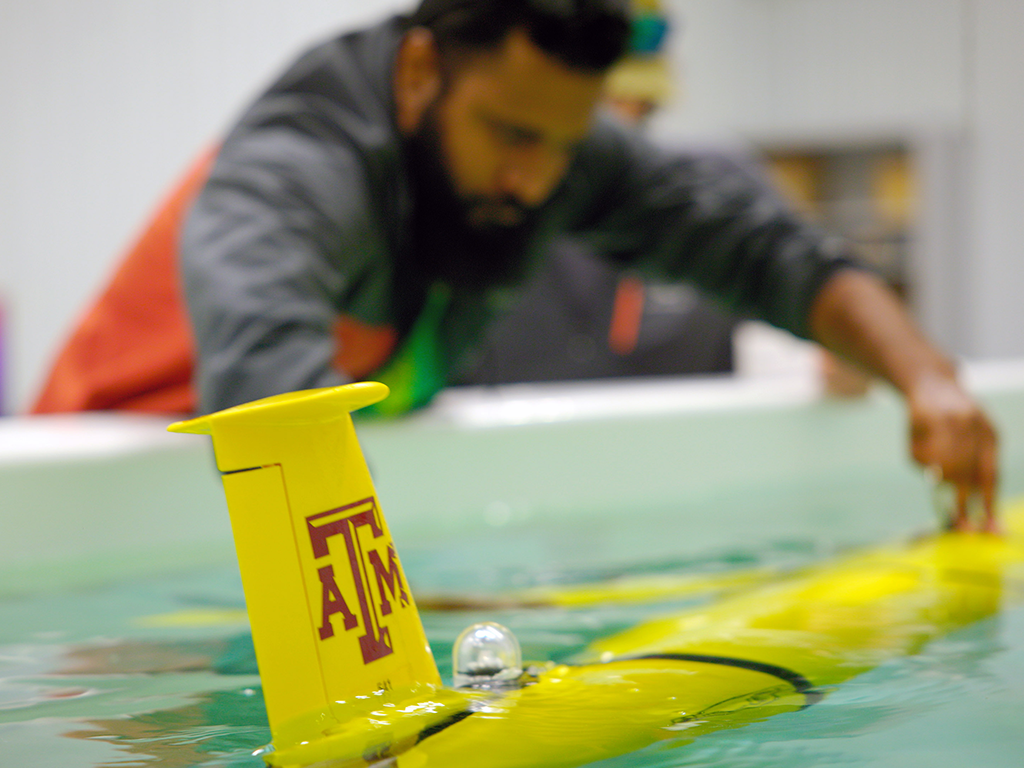Recovery of buoyancy glider from the depths of Gulf of Mexico provides insight into oceanic conditions

Image: Chris Jarvis, Arts and Sciences Marketing and Communications
A team of researchers and technicians from the Geochemical and Environmental Research Group (GERG) at Texas A&M University achieved a rare feat in marine research this past fall, successfully retrieving a GERG Slocum buoyancy glider from the depths of the Gulf of Mexico.
GERG assistant research scientist Dr. Uchenna Nwankwo led the Oct. 17, 2023, mission to recover the glider, identified as S/N 307 Howdy. Key figures in the field also factored into the recovery mission, including Dr. Jorge Brenner and Dr. Anthony Knap, College of Arts and Sciences, and Dr. Steve DiMarco, College of Arts and Sciences and College of Engineering.
S/N 307 Howdy had been deployed since August 2023, collecting data from the Gulf of Mexico’s depths. The glider was gathering important data and information related to oceanic conditions and providing crucial insight for a variety of scientific applications.
The actual act of recovering S/N 307 involved Nwankwo embarking on a boat to retrieve the glider using coordinates reported by the glider to guide him to its precise location. The retrieval process required careful maneuvering in calm waters to lift the glider on board, ensuring that no damage occurred during the operation.
In the days leading up to and immediately following the GERG Slocum buoyancy glider recovery, Nwankwo also played a pivotal role as an oceanographer with GCOOS in coordinating the near-simultaneous retrieval of two U.S. Navy gliders owned, piloted and operated by the Naval Oceanographic Office (NAVO) Navy Glider Operations Center. Bright, along with fellow GERG Electronics Technician Emily Calder, participated in transporting these gliders ashore.
These deployments are a component of the National Hurricane Glider Initiative, a joint endeavor supported by the National Oceanic and Atmospheric Administration Integrated Ocean Observing System (NOAA-IOOS) and GCOOS-Regional Association that is conducted in collaboration with NAVO. Nwankwo says the data collected is essential for agencies like the National Weather Service and the National Hurricane Center because it significantly enhances the precision of hurricane intensification forecasts.
“The National Hurricane Glider Initiative is not just a scientific endeavor; it’s a collaborative effort to enhance our ability to predict and understand the behavior of hurricanes,” Nwankwo added. “The data collected is vital for improving the accuracy of forecasts and, ultimately, for better preparedness in the face of these natural occurrences.”
Whether recent or ongoing, GERG’s efforts underscore the importance of collaborative research in unraveling the mysteries of our oceans and enhancing our ability to predict and respond to hurricanes and other natural events that impact our environment and broader society.

